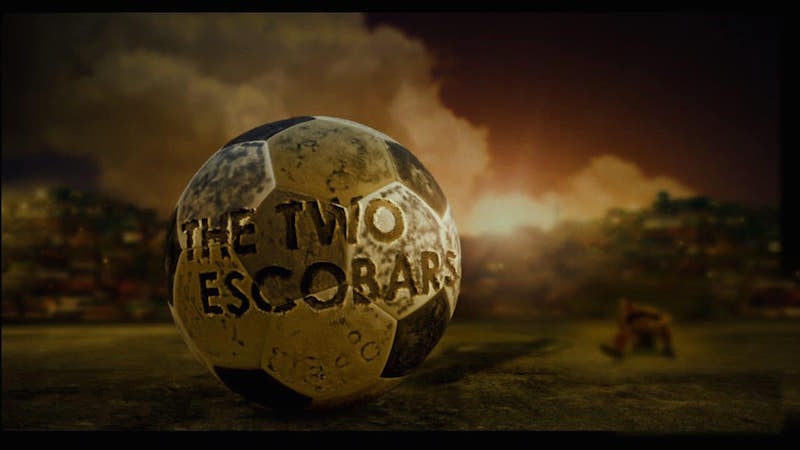Synopsis: An Ozark Mountain girl hunts down her father through dangerous terrain while trying to keep her family intact.
Release Date: June 11, 2010 MPAA Rating: PG-13
Genre(s): Drama, Thriller
Film Review

Production
Winter’s Bone, an astonishing noirish indie thriller, offers filmgoers a taunt, intriguing respite from this summer’s parade of action, animation, and comedy. It is only in limited release across the country but it’s definitely worth seeking. Adapted from the novel by Daniel Woodrell and directed by Debra Granik, Winter’s Bone tells the story of 17-year old Missouri native Ree Dolly (Jennifer Lawrence) who is raising her two younger siblings Sonny (Isaiah Stone) and Ashlee (Ashlee Johnson) in lieu of her near-comatose mother. When the town sheriff (Garrett Dillahunt) informs her that her meth-cooking father has offered up their home as bail, and subsequently skipped bail, Ree sets off to find her father, dead or alive, to save her family from slipping further into the depths of abject poverty.
Shot on location in the backwoods of the Ozarks mountains, director Granik paints a grim portrait of an often neglected segment of the American population, what some may think of as “white trash.” But the film rejects this epithet and indeed, rejects any hint of objectification. The film mingles a professional cast and a cadre of local talent. Ree’s house and the surrounding woods are not a set, but a real family’s home. The film avoids lingering on the telltale signs of poverty—the childrens’ threadbare clothes, the tires in the yard–by focusing on Ree’s unyielding search for her father. In fact, the film’s construction is more detective thriller, complete with resolute investigator and dangerous suspects, than rural melodrama.
In this light, Winter’s Bone becomes a satisfying genre film. Like the world of the film noir detective, Ree’s world is permeated with danger. Every casual hunting rifle, every rusty wood splitter, the normal trapping of her everyday existence, take on a new life as Ree is confronted with a community that does not want her father found. The spectre of drug addiction haunts every frame of the picture. You can see it in the ragged, creased faces of Ree’s neighbors and family members, their violent paranoia heightened by years of abuse. As Ree walks from house to house looking for her father, it becomes clear that she’s related to most of these people through blood (a distant cousin here, a shared common ancestor there), but that bond seems to have long since eroded with the advent of drugs and money. The community is too scared, too proud, or just too busy managing their own delicate finances, to risk helping Ree. She’s on her own.

Acting
In a year already half over, Winter’s Bone boasts two of the most Oscar-worthy performances of 2010. Jennifer Lawrence’s revelatory turn as Ree Dolly has the kind of self-assured strength seldom seen a performer so young. She absolutely anchors the film, commanding our attention, and our respect, at every turn. Her Ree resists the usual cliches for a female lead. Ree is tough and proud but never “kick-ass” in that self-conscious tough girl act we’ve all come to associate with any film that dares to put a woman at the center of the action. There are no witty quips (though Ree does manage some satisfying verbal smackdowns) or quick-tempered, impulsive lashings out. Ree navigates her environment with the skill and knowledge of an insider, someone who’s too intimately familiar with dangers to take them for granted–or to let them intimidate and distract her from the task at hand.
Also turning in an Oscar-worthy performance is John Hawkes, the reliably brilliant character actor who’s Teardrop is a wiry sonuvabitch with hidden nobility. Hawkes’ pitch black eyes and hungry wolf’s face elicit intimidation and sympathy in equal measure, sometimes in the same shot. Throughout the first half of the film, Teardrop is a certain kind of character, an obstacle to Ree’s investigation. That he becomes an ally, and even something of a hero later in the story, is a testament to Hawkes’ ability to bring a complex and inviolable character to life.

Cinematography
Granik and cinematographer Michael McDonough have created something extraordinary here, rendering Ree’s world with stark, gritty realism while suffusing the environment with a darker, harsher edge than reality demands. It’s an exercise in character subjectivity: the steely blue tones of the Ozark winter are as resolute as Ree’s hard stare. The cinematography allows us to feel the winter chill on our face, to feel the crunch of dead leaves underfoot. Although the film does have a feeling of pseudo-documentary realism, it is also obviously stylized. Nighttime scenes are, as Raymond Chandler once wrote, “dark with something more than night.” Granik and McDonough borrow from the film noir tradition of hard-edged, low-key lighting while maintaining a more straightforward cinema verite style. It’s the collision of these two styles that makes Winter’s Bone so unique; it’s both a sparse, survivalist tale of rural poverty and a satisfying genre thriller. Even more extraordinarily, Winter’s Bone was shot on a RED digital camera, a fact I didn’t know until the end credits. I never would have guessed a picture with this much visual depth and variety had been shot on digital. Those invested in the heated film vs. digital debate should check out this film.
Cast and Crew
- Director(s): Debra Granik
- Producer(s): Debra GranikAnne RoselliniDaniel Woodrell
- Screenwriter(s): Jennifer Lawrence (Ree Dolly)John Hawkes (Teardrop)Kevin Breznahan (Little Arthur)
- Story: Dale Dickey (Merab)
- Cast: Affonso GoncalvesMichael McDonough
- Editor(s):
- Cinematographer: Dickon Hinchliffe
- Production Designer(s):
- Costume Designer:
- Casting Director(s):
- Music Score:
- Music Performed By:
- Country Of Origin: USA
